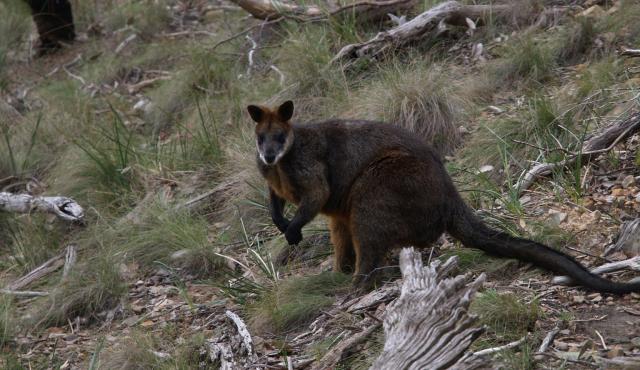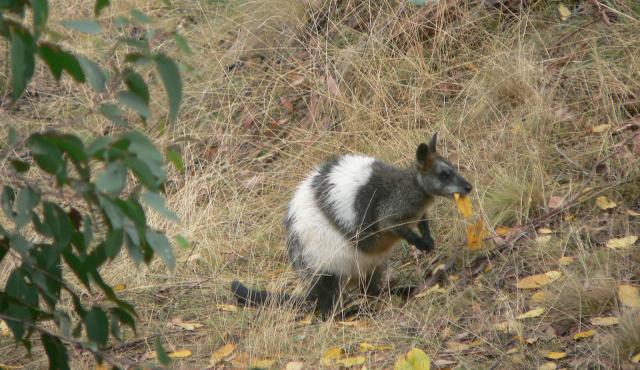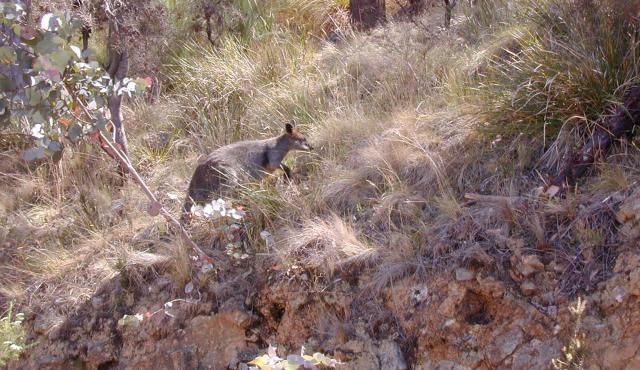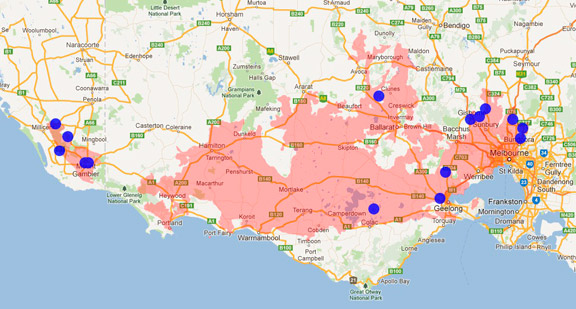A range of teacher professional learning programs will be developed to accompany the Biodiversity of the Western Volcanic Plains online outreach...



Swamp Wallaby
Wallabia bicolor
Active during the day but are shy and usually solitary. Breeds throughout the year. The joey leaves the pouch after 8-9 months and is weaned at about 15 months old. Swamp wallablies can start breeding at 15-18 months old.
| Details | Description |
| Type | Mammal |
| Group | Marsupial |
| Other Common Names | Black Wallaby, Black-tailed Wallaby |
| Identifying Characteristics | |
| Distinctive Markings | Dark face with white stripe from upper lip below eye towards the ear. Forehead, crown and base of dark ears rufous. When disturbed, rapidly bounds away with the first few leaps being quite noisy. |
| Diet | Herbivore. Eats grasses and seedlings but mostly shrub leaves and ferns. |
| Habitat | Thick undergrowth in woodland and forest. Shelters in dense grass, bracken or shrubs during the day. |
| Native Status | Native to Australia |
| Taxonomy | |
| Phylum | Chordata |
| Class | Mammalia |
| Order | Diprotodontia |
| Family | Macropodidae |
| Genus | Wallabia |
| Species | bicolor |

Distribution maps indicate current and historic locations where species have been sighted.
Source: Atlas of Living Australia
| Conservation Status | |
| DEPI Advisory List | Not listed |
| FFG Act | Not listed |
| EPBC Act | Not listed |
The conservation status of species is listed within Victoria and Australia.
The Department of Environment and Primary Industry (DEPI) Advisory List consists of non-statutory advisory lists of rare or threatened flora and fauna within Victoria.
The Flora and Fauna Guarantee Act 1988 (FFG Act) lists threatened species in Victoria. Under the Act, an Action Statement is produced for each listed species.
The Environment Protection and Biodiversity Conservation Act 1999 (EPBC Act) is the Australian Government’s key piece of environmental legislation, listing nationally threatened native species and ecological communities.



